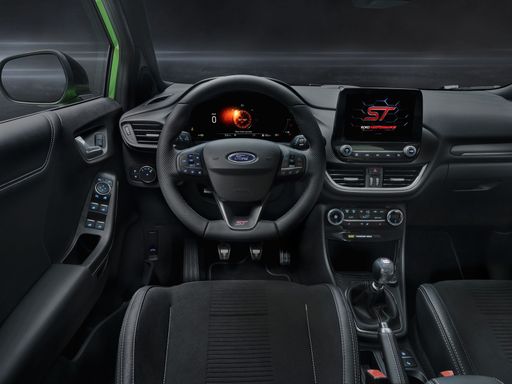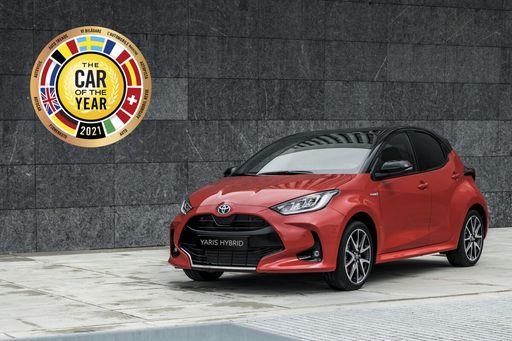Ford Puma vs Toyota Yaris – Kumpi malli toimii paremmin arjessa?
Molemmilla malleilla on vahvuutensa – mutta kumpi sopii sinulle paremmin?
Vertaa suorituskykyä, kulutusta, hintaa ja tiloja suoraan: Ford Puma vai Toyota Yaris?
Ford Puma vs. Toyota Yaris: A Comprehensive Comparison
The compact SUV segment has been gaining significant popularity as urban dwellers seek practicality, style, and efficiency. Among the leading contenders in this category are the Ford Puma and the Toyota Yaris. Both vehicles boast unique features and advantages that cater to different types of drivers. Let’s delve into a comparison of these two models, focusing on their technical specifications, innovations, and overall performance.
Body Types and Dimensions
The Ford Puma is classified as a compact SUV, making it a versatile choice for those needing extra cargo space and higher ground clearance. The Puma measures between 4186 and 4226 mm in length, 1805 mm in width, and stands between 1550 and 1555 mm in height.
On the other hand, the Toyota Yaris comes as a hatchback and is more compact, with a length ranging from 3940 to 3995 mm, a width of 1745 to 1805 mm, and a height of 1455 to 1500 mm. This difference in body types reflects a divergent approach. The Puma favors a sportier drive with more utility, while the Yaris is aimed at maximizing maneuverability and urban efficiency.
Engine and Performance
Under the hood, the Ford Puma features several petrol options, including MHEV variants with power outputs ranging from 125 to 168 HP. The electric version boasts a notable electric range of up to 376 km and offers a maximum speed of 210 km/h. Fuel consumption is competitive, with figures noting as low as 5.4 L/100 km for petrol and 13.1 kWh/100 km for electric. The Puma can accelerate from 0-100 km/h in as little as 7.4 seconds.
The Toyota Yaris, in contrast, offers a different powertrain with a full hybrid system producing up to 130 HP. Fuel efficiency is impressive, with consumption rates as low as 3.8 L/100 km for the hybrid version, making it ideal for city driving. The Yaris can reach a maximum speed of 230 km/h while achieving 0-100 km/h acceleration in just 9.2 seconds for the hybrid model.
Transmission and Drive Types
Ford presents the Puma with options for both manual and automatic transmissions, including an advanced dual-clutch system. It is primarily a front-wheel-drive vehicle, catering to everyday city driving with a sporty feel.
Meanwhile, the Toyota Yaris offers a versatile driving experience with both front-wheel and all-wheel drive options, equipped with CVT for seamless acceleration in hybrid variants. This flexibility enhances the Yaris's capability to handle diverse road conditions, especially with its all-wheel-drive offering.
Interior Features and Comfort
When it comes to cabin space, the Ford Puma excels with a trunk capacity ranging from 456 to 523 L, making it an excellent choice for families and those needing extra luggage space. It comfortably seats five passengers, enhancing its utility.
The Toyota Yaris, while offering a smaller trunk size of 286 to 141 L, still provides adequate room for five passengers in its hatchback design. The focus here is more on compactness and efficiency, making it easier to navigate city streets.
Innovative Technologies
Innovation is evident in both models. The Ford Puma leverages Ford's latest in-car technology, including an advanced infotainment system with a user-friendly interface and smartphone integration. Additionally, it showcases Ford's commitment to sustainability with its MHEV options.
The Toyota Yaris shines with its Toyota Safety Sense technology, incorporating advanced safety features such as pre-collision systems, lane departure alerts, and adaptive cruise control. This commitment to safety makes the Yaris a great choice for safety-conscious drivers.
Conclusion: Which One is Right for You?
Both the Ford Puma and the Toyota Yaris represent excellent choices in their respective segments. The Puma stands out for those seeking a sporty, spacious SUV with hybrid and fully electric options, while the Yaris appeals to those looking for a compact, efficient, and safe hatchback. Ultimately, the choice depends on personal preferences regarding space, performance, and driving experience.
Tässä mennään yksityiskohtiin: tekniset erot tarkemmin
Kustannukset ja kulutus: Hinnan ja tehokkuuden vertailussa erot tulevat usein selvimmin esiin. Tässä ratkaistaan, kumpi malli sopii paremmin budjettiisi pitkällä aikavälillä.
Toyota Yaris on hinnassa hieman edullisempi – sen lähtöhinta on 25500 €, kun taas Ford Puma maksaa 28900 €. Ero on noin 3400 €.
Polttoaineenkulutuksessa näkyy ero: Toyota Yaris kuluttaa 3.80 L ja on siten selvä taloudellisempi kuin Ford Puma, jonka kulutus on 5.40 L. Ero on noin 1.60 L /100 km.
Moottori ja suorituskyky: Moottorin alta paljastuu, kumpi malli on urheilullisempi ja kiihtyy paremmin.
Moottoritehossa Toyota Yaris on erottuva etulyöntiasemassa – 280 hv verrattuna 168 hv:een. Ero on noin 112 hv hv.
Kiihdytyksessä 0–100 km/h Toyota Yaris on erottuva nopeampi – 5.50 s vs. 7.40 s. Ero on noin 1.90 s sekuntia.
Huippunopeudessa Toyota Yaris on vähäinen edellä – se yltää 230 km/h:een, kun taas Ford Puma saavuttaa 210 km/h. Ero on noin 20 km/h.
Vääntömomentissa näkyy myös ero: Toyota Yaris vetää selvästi havaittava voimakkaammin, 390 Nm verrattuna 290 Nm:een. Eroa on noin 100 Nm.
Tila ja käytännöllisyys: Perheauto vai arjen kumppani – kumpi tarjoaa enemmän tilaa, mukavuutta ja käytettävyyttä?
Molemmissa autoissa on tilaa 5 henkilölle.
Omapainossa Toyota Yaris on erottuva kevyempi – 1090 kg verrattuna 1316 kg:een. Painoero on noin 226 kg.
Tavaratilan koossa Ford Puma tarjoaa selvä enemmän – 523 L verrattuna 286 L:een. Ero on noin 237 L.
Maksimikantavuudessa Ford Puma pärjää huomattava paremmin – jopa 1283 L, noin 348 L enemmän kuin Toyota Yaris.
Kantavuudessa Toyota Yaris on hieman parempi – 525 kg verrattuna 469 kg:een. Ero on noin 56 kg.
Kokonaisuudessaan Toyota Yaris on ylittää lähes kaikilla osa-alueilla ja nappaa näin DriveDuel Champion -tittelin.
Se vakuuttaa tasapainoisemmalla kokonaisuudellaan ja on käytännöllisempi kumppani arjessa.
Ford Puma
Ford Puma on saanut runsaasti huomiota upealla muotoilullaan ja käytännöllisillä ominaisuuksillaan. Sen kompakti koko yhdistää mukavasti energisen ajokokemuksen ja tilavat tavaratilat. Tämä auto on täydellinen valinta kaupunkiajoon, yhdistäen tyylikkyyden ja toimivuuden saumattomasti.
Tiedot @ puma.fordpresskits.com
@ puma.fordpresskits.com
 @ puma.fordpresskits.com
@ puma.fordpresskits.com
 @ puma.fordpresskits.com
@ puma.fordpresskits.com
 @ puma.fordpresskits.com
@ puma.fordpresskits.com
Toyota Yaris
Toyota Yaris on suosittu kompakti auto, joka yhdistää kiehtovan muotoilun ja tehokkuuden. Sen tilava sisätila ja joustava lokointi tekevät siitä erinomaisen vaihtoehdon kaupungissa liikkumiseen. Yaris tarjoaa myös nykyaikaisia turvallisuusominaisuuksia, mikä lisää matkustajien mielenrauhaa.
Tiedot @ Toyota
@ Toyota
 @ Toyota
@ Toyota

|

|
|
|
|
Kustannukset ja kulutus |
|
|---|---|
|
Hinta
28900 - 42400 €
|
Hinta
25500 - 54500 €
|
|
Kulutus L/100km
5.4 - 5.9 L
|
Kulutus L/100km
3.8 - 9.5 L
|
|
Kulutus kWh/100km
13.1 - 13.9 kWh
|
Kulutus kWh/100km
-
|
|
Sähköinen toimintasäde
361 - 376 km
|
Sähköinen toimintasäde
-
|
|
Akun kapasiteetti
43 kWh
|
Akun kapasiteetti
-
|
|
CO2
0 - 135 g/km
|
CO2
87 - 215 g/km
|
|
Polttoainesäiliön tilavuus
42 L
|
Polttoainesäiliön tilavuus
36 - 50 L
|
Mitat ja kori |
|
|---|---|
|
Kori
SUV
|
Kori
Hatchback
|
|
Istuimet
5
|
Istuimet
4 - 5
|
|
Ovet
5
|
Ovet
3 - 5
|
|
Omamassa
1316 - 1563 kg
|
Omamassa
1090 - 1356 kg
|
|
Tavaratila
456 - 523 L
|
Tavaratila
141 - 286 L
|
|
Pituus
4186 - 4226 mm
|
Pituus
3940 - 3995 mm
|
|
Leveys
1805 mm
|
Leveys
1745 - 1805 mm
|
|
Korkeus
1550 - 1555 mm
|
Korkeus
1455 - 1500 mm
|
|
Maksimi tavaratila
1216 - 1283 L
|
Maksimi tavaratila
935 L
|
|
Kantavuus
367 - 469 kg
|
Kantavuus
289 - 525 kg
|
Moottori ja suorituskyky |
|
|---|---|
|
Moottorityyppi
Sähkö, Bensiini MHEV
|
Moottorityyppi
Täyshybridi, Bensiini
|
|
Vaihteisto
Automaatti, Manuel
|
Vaihteisto
Automaatti, Manuel
|
|
Vaihteiston tyyppi
Alennusvaihteisto, Manuaalivaihteisto, Kaksoiskytkin automaatti
|
Vaihteiston tyyppi
CVT-vaihteisto, Manuaalivaihteisto, Automaattivaihteisto
|
|
Vetotapa
Etuveto
|
Vetotapa
Etuveto, Neliveto
|
|
Teho hv
125 - 168 hv
|
Teho hv
116 - 280 hv
|
|
Kiihtyvyys 0-100 km/h
7.4 - 9.8 s
|
Kiihtyvyys 0-100 km/h
5.5 - 9.7 s
|
|
Huippunopeus
160 - 210 km/h
|
Huippunopeus
175 - 230 km/h
|
|
Vääntömomentti
170 - 290 Nm
|
Vääntömomentti
390 Nm
|
|
Sylinterien lukumäärä
3
|
Sylinterien lukumäärä
3
|
|
Teho kW
92 - 124 kW
|
Teho kW
85 - 206 kW
|
|
Iskutilavuus
999 cm3
|
Iskutilavuus
1490 - 1618 cm3
|
Yleiset |
|
|---|---|
|
Mallivuosi
2025
|
Mallivuosi
2024 - 2025
|
|
CO2-tehokkuusluokka
A, D
|
CO2-tehokkuusluokka
B, G
|
|
Merkki
Ford
|
Merkki
Toyota
|
Onko Ford Puma saatavana eri vetotavoilla?
Mallia tarjotaan Etuveto-versiona.
Näytetyt hinnat ja tiedot ovat arvioita, jotka perustuvat Saksan listahintoihin, ja voivat vaihdella maittain. Nämä tiedot eivät ole oikeudellisesti sitovia.
